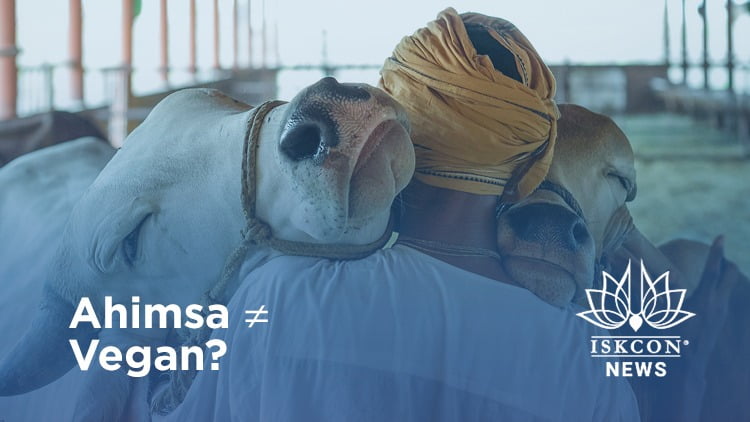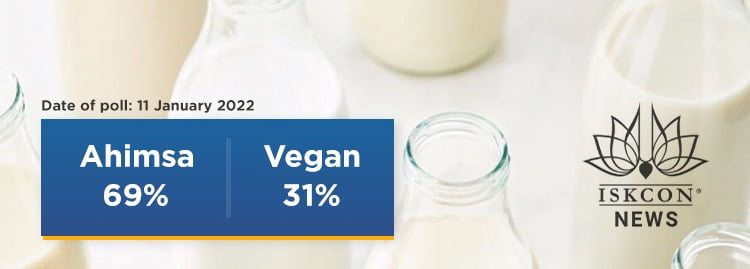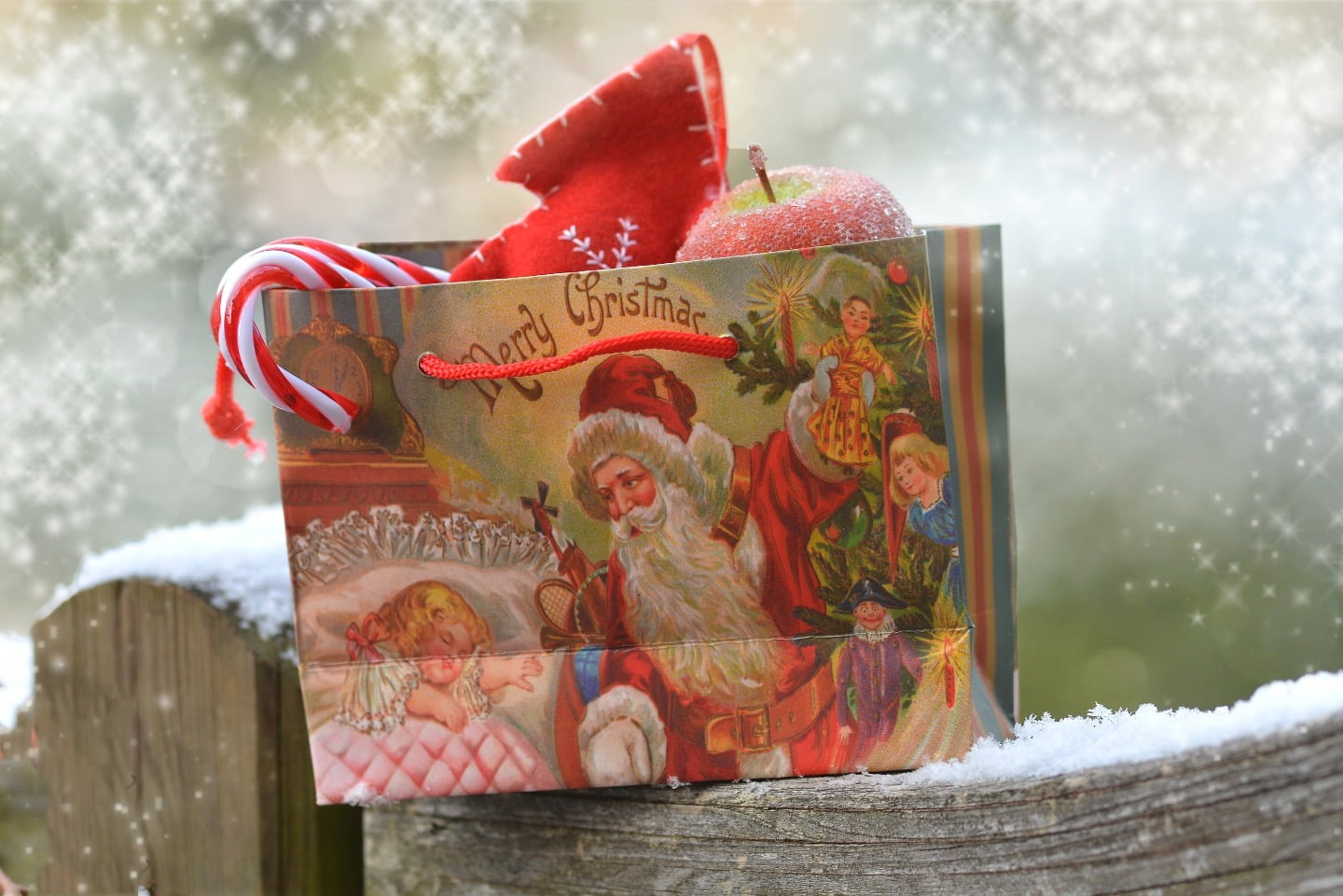Ahimsa Vs. Veganism
By Janatari Devi Dasi | Jun 11, 2022

There is a lot of tension in our devotee community between ahimsa dairy lovers and vegan devotees. Let us explore what each community believes, the similarities, and the differences.
Ahimsa means non-violent. Ahimsa dairies do not confine their herd to a building where they never see the sun and they are allowed natural behaviors such as living in a herd and chewing cud in a pasture. Ahimsa dairies do not slaughter the cow at the end of her milking days. When her milking days are past, she can live out her life in a pasture with other retired dairy cows. Milking is mostly done by hand rather than mechanically and dairy cows are not typically artificially inseminated on ahimsa dairy farms. Calves on ahimsa farms are allowed to stay with their mother and drink some of their mother’s milk rather than the milk substitute fed to calves on industrial farms. These calves are often allowed to naturally wean from their mothers.
Vegans on the other hand avoid using animals for food, sport, clothing, entertainment, or any other purpose. This means that in addition to not consuming any animal products, they don’t wear any animal-based fabrics like wool or leather, visit the zoo or circus, or use products tested on animals such as makeup or cleaning products. Many vegans feel that by consuming dairy that they are supporting animal slaughter and that is why they chose to abstain; as male calves are typically sold to veal farms not too long after they are born, and dairy cows are slaughtered for inexpensive meat after only a couple of years when their milk supply dips.

ISKCON News poll conducted on Jan 11, 2022, via social media
If we are going to compare ahimsa dairy and veganism, factory-farmed milk needs to be discussed too as that is what most people consume. Factory-farmed cows are 70% of animals in a factory farm setting. These animals suffer from repeated forced insemination starting around 14 months of age, where their calves are taken immediately after giving birth so that the milk can be taken for humans as only new mothers produce milk. “Most factory-farmed cows never get to step foot outside during their production years, confined instead to indoor sheds that are often filthy and crowded. They’re denied the ability to graze, lie comfortably, nurse their young, or live in socially complex herds with their offspring.” (FACTORY-FARMED COWS: WHAT HAPPENS TO CATTLE ON FACTORY FARMS? TheHumaneLeague.org) The lives of factory-farmed cows are so intense, that they are typically slaughtered around five years of age when their milk production dips, and the male calves are sold to veal farms as they are considered useless as they’re non-milk producers. So, we can all agree that ahimsa and veganism are better for Krishna’s cows, right?
The cows that offered Krishna their milk were loved, allowed to live with their calves, and ultimately the happiest and most blessed cows that have ever lived. Krishna is described as go-brāhmaṇa-hitāya ca, meaning that he is the well-wisher of the cows and the Brahmanas.
The cows that gave Krishna their milk did so happily and were far removed from the factory-farmed cows of today. In summary, both camps, ahimsa dairy lovers and vegans, are engaging in cow protection using different methods. Both parties care about the welfare of the animals and are going about it in the way that works best for them. There is nothing in this material world that is one hundred percent ethically pure, so we need to ensure that we offer all of our food to Krishna, avoiding eating bhoga at all costs.












